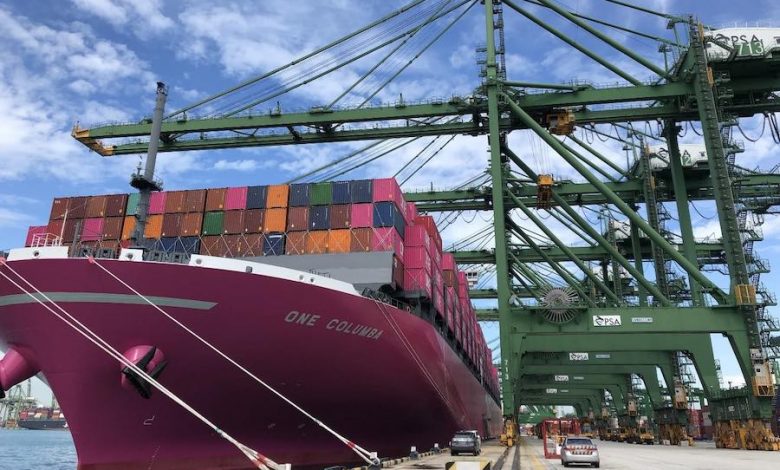ONE too many?

When the three Japanese carriers announced to the world that their containerlines will be united under one brand, the world of maritime shipping didn’t blink. It was, after all, the period of upheaval and stress exacerbated by Korea’s HMM and Hanjin falling into the abyss, Maersk and MSC’s network rationalisation, and Cosco’s relentless march swallowing CSCL and ultimately OOCL. In fact, it seemed as a rational response to calls for further consolidation so often emerging out of the talking heads of the industry.
The merger decision did not have a similar level of support among business strategy experts. The majority of them saw Ocean Network Express (ONE) as a forced marriage of disparate organisational structures, cultures, management styles, operational savviness, processes and the supporting information management systems. Combining two entities in any industry is hard, but combining three entities at the same time made the change management impossible to control.
In the strategists’ minds there was still the elephant in the room: the fleet make up and the orderbooks of all three carriers, very different for each one, the legacy of their own unique expansion plans prior to the merger.
When it comes to keeping the existing fleet and announcing and placing orders for $150m-$200m worth of brand new chunks of steel, there are a lot of egos involved and the defence of each past decision is fierce. Add to this the three disparate chartering strategies for the three existing fleets, and the merged picture became even more complex.
The history of previous mergers inside shipping and across many other industries taught us that those factors would have a tremendous impact on the stability and loyalty of the workforce. The writing was on the wall. Executives talking up the ONE merger brought the market’s attention to projected combined savings of $440m in the first year of the merger, followed by savings increasing in the following three years. While ONE’s executives stressed that those savings would be due to consolidation of activities and contracts with shippers, the question of duplication of workforce positions was there for all to see too.
I recall hearing ONE’s CEO Jeremy Nixon commenting that there will be no reduction in workforce as a result of the merger. However, using the history of the integration performed by Cosco and CSCL, then by Cosco and OOCL, bystanders guessed that the rapid removal of overlapping roles and functions would be accompanied by departures of people across the whole spectrum of senior managerial layers all the way down to junior roles.
Last year showed the stress cracks in the original ONE integration strategy. The most problematic was the sudden production backlog stretching all the way to the booking process, resulting in lost sales and bookings across the network. The old enemy of all integrations reared its head – the quality of booking-related data. The decision to migrate to one system was a sound one, but the strategy to assure clean data brought across from the two remaining systems was not executed as promised. As a result, the existing booking and documentation staff were asked to work weekends and national holidays, not the greatest method of motivating one’s workforce, especially as they felt understaffed for the task at hand. With the workplace transition in place, frontline staff felt nothing like ONE, remaining somewhat entrenched in the work practices of one of their previous three employers, if not in their previous organisational structures. The impact to the bottom line? Instead of $440m savings, a $400m loss.
The lack of significant improvement in the foreseeable future will inevitably expose different thinking among MOL, NYK and K Line management, as each owner will have to tackle substantial losses from the ONE venture. Their balance sheets and credit worthiness will be on the line. The stress of booking more losses over a prolonged period might ultimately push the allies apart. That might be an unfortunate, but not impossible outcome.
The recent results reported by K Line, arguably the smallest contributor to ONE, showed the possible depth and location of the cracks appearing in the united ONE façade. In their latest financial update, K Line announced that its annual loss for year ending March 31 will hit $895m, five times more than originally forecast. Charter cancellations could chop off about $90m from that amount, but even the remaining $800m is no spare change for this carrier. If extrapolated on the remaining partners to the extent of their shares in ONE, the numbers, whether reported now or later, could be staggering. The owners of ONE will have every reason to start looking at their original decision to merge, while facing tough questions of their own financial vulnerability.
The pain for ONE will not end there. Toward the end of 2018, MOL’s head Junichiro Ikeda warned that higher costs related to more expensive low sulphur bunker will push many shipping lines toward bankruptcy. Suddenly, people following ONE might start to wonder what will be the impact on each of the three ONE partners and whether at least one of them pulls their plug on ONE and attempts to sail away alone.

If one third of ONE goes, that’s a way to make the Hanjin disaster look like picnic…